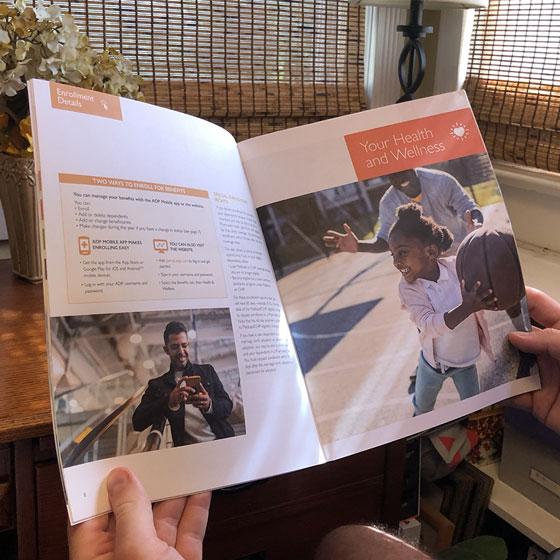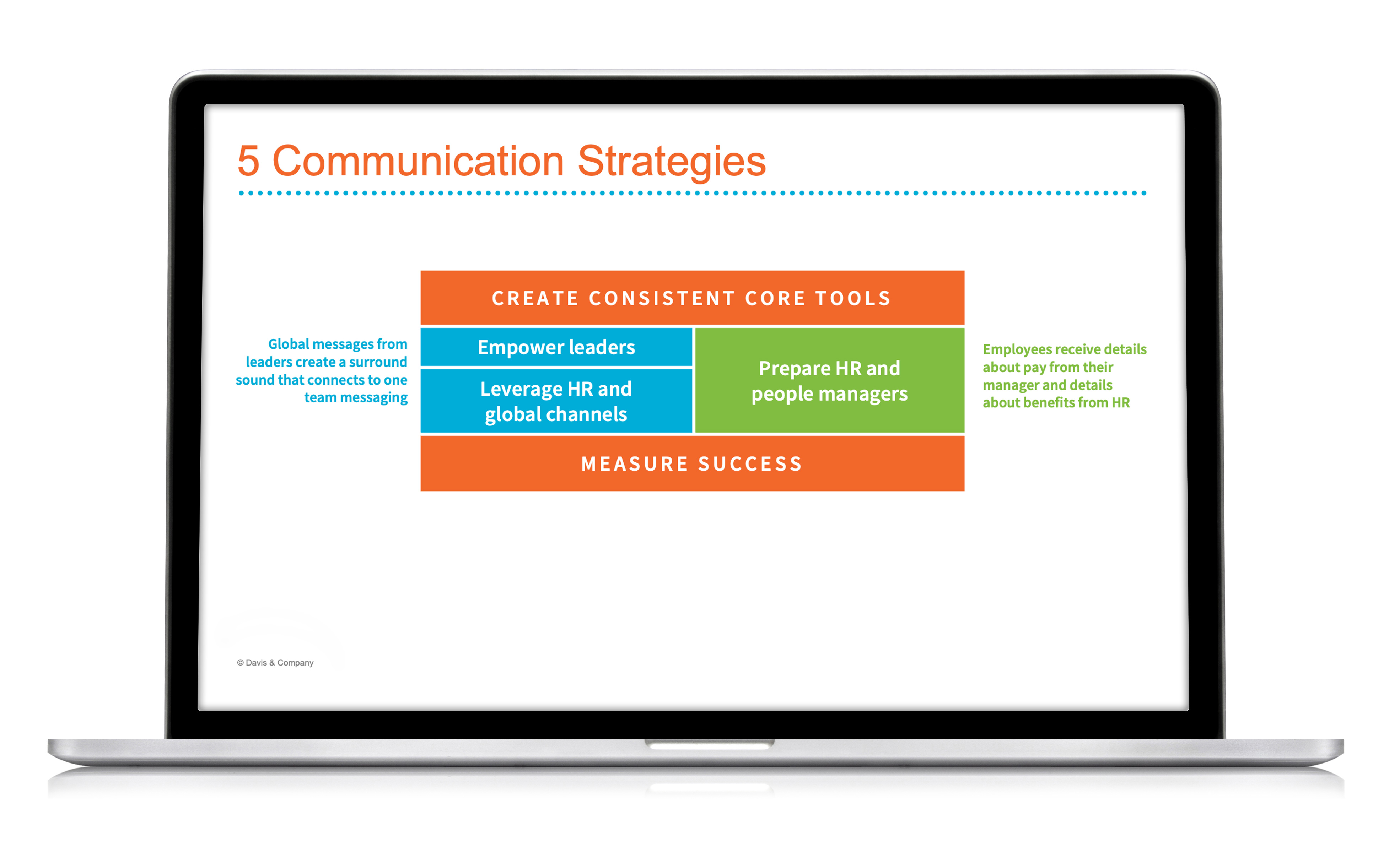To help employees get the most out of their HR policies and programs, you need an effective HR communication strategy that focuses on “What does this mean to me?” We develop HR communication that not only informs, but also engages employees so they’re prepared to take action.

Have an HR communication challenge? Let's chat. We have examples of solutions across many topics, including:
- Benefits
- Compensation
- Competencies
- Diversity, equity and inclusion (DE&I)
- Employee engagement
- Employee value proposition
- Handbooks/policies
- Learning & Development
- Onboarding
- Performance management
- Recognition
- Recruiting
- Retirement
- Values
- Wellness
Case study: Adopting a common approach to total rewards around the world
After a series of acquisitions, a global consumer products company was focused on uniting all businesses and regions under one umbrella. One of the first big challenges? Creating a consistent, competitive package of pay and benefits for all employees worldwide.
As pay and benefits programs were identified and designed, the HR team realized it needed a strong change communication strategy to help 25,000 impacted employees understand the new total rewards approach.
That’s when Davis & Company jumped in to help.
Mapping stakeholder impact
Our change communication planning efforts started with an important concept: not all stakeholders and employees would be impacted in the same way. Some would not notice any change to their benefits and compensation, some would see dramatic changes, some would be impacted positively and some negatively.
Further, HR business partners were expected to understand, communicate and answer questions about the changes and leaders needed to be champions of the new approach. The team also faced an additional complicating factor on the benefits side: Each country or region had unique laws, processes and guidelines to follow.
Working closely with the global HR team and regional contacts, we helped each region identify how and when the changes would impact employee groups, including:
- Details of what was changing
- Understanding positive/neutral/negative impact
- Actions employees would need to take
- Local resources and experts where employees could go with questions
Appealing to employees’ emotions
It’s no secret that during times of change, the rumor mill starts and anxiety heightens—especially when the change impacts their personal benefits, compensation and job level. We knew the antidote would be transparent communication that was easy for employees to understand and answered the key question, “What does this mean to me?”
We worked with global HR to:
- Drop the corporate jargon and use simple, straightforward language. For example, we changed the name of the initiative from Total Rewards Harmonization to Reimagine Rewards: Benefits + Pay Integration.
- Provide context so each audience understood what was changing and why the change was important—while rallying around a “one team” journey message. Offer opportunities for questions and dialogue.
Targeting tactics by audience
While our communication approach ensured we delivered a consistent global message, we relied on stakeholders to advocate and communicate change through targeted communication tactics. Our team worked with Global HR to prepare the stakeholders (leaders, people managers and local HR business partners) for their important role through training workshops and supplied communication resources.
Here's an overview of our approach and the role each stakeholder played:

The result?
Thanks to our comprehensive approach, more than 25,000 impacted employees around the world understood what would—and would not—change for them. And managers and HR business partners were prepared to lead communication efforts and answer questions. Focus group research showed that the transition to the new total rewards approach was smooth and well received.

